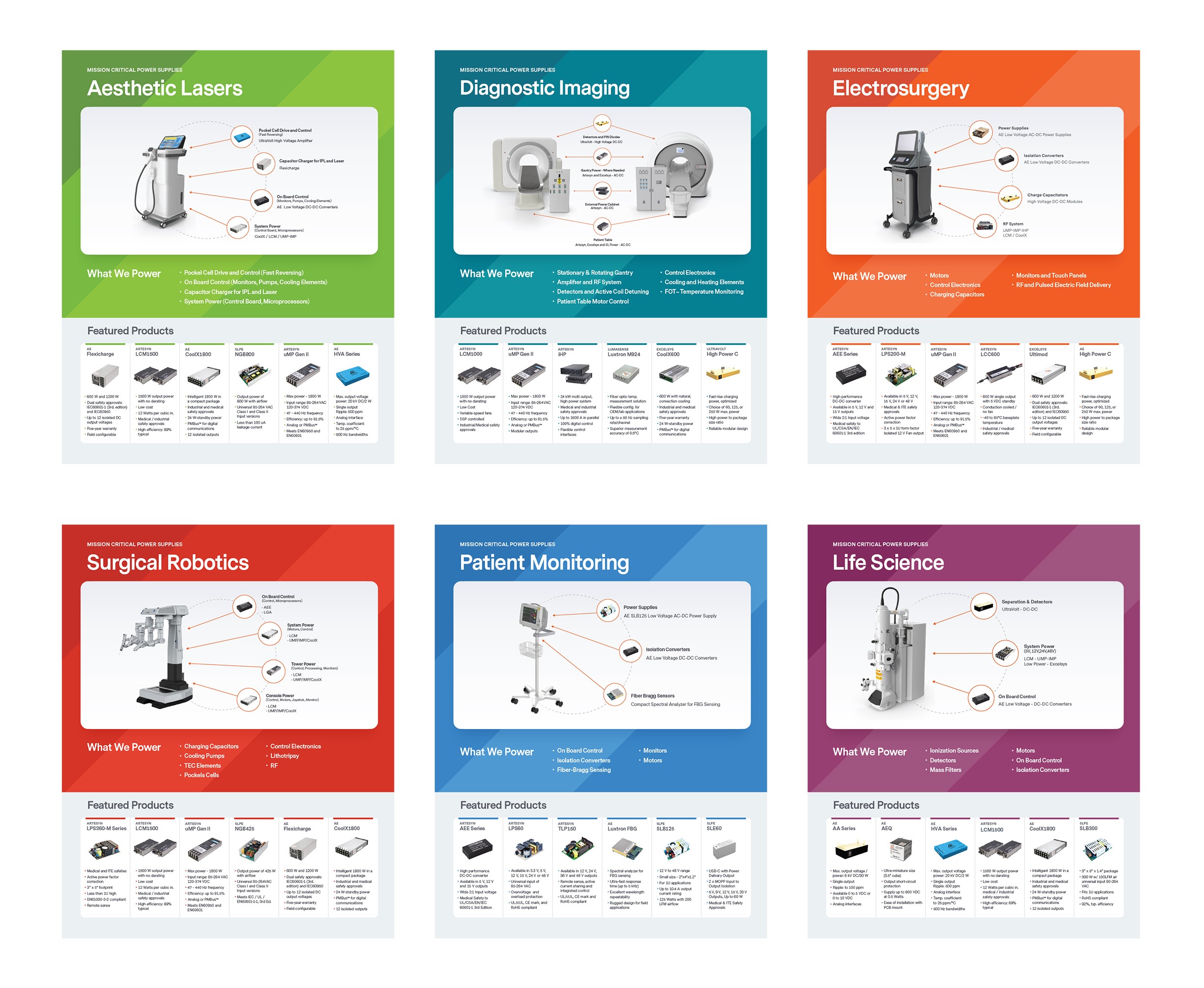Top 5 Medical Industry Trends from MEDICA 2023
Posted December 27, 2023 by Dermot Flynn
AE saw first hand emerging trends that are propelling advancements. The medical industry’s ongoing transformation is marked by Artificial Intelligence (AI)-driven innovations, decentralized care models, robotic surgery enhancements and the miniaturization of medical technologies. These shifts, further augmented by the COVID-19 pandemic, are collectively working to enhance patient care, improve healthcare outcomes and make healthcare more accessible and convenient for individuals worldwide.
The COVID-19 pandemic accelerated the adoption of remote healthcare, creating a strong impetus for the deployment of home healthcare equipment. Patients can now receive essential medical care from the comfort of their homes, reducing exposure to infectious agents and enhancing overall safety. Moreover, improved data acquisition and communication technology within medical equipment are enabling seamless data sharing between healthcare providers and patients.
5 key takeaways from Medica 2023:
1. Innovations for better health – digital transformation powered by AI
One of the focus areas this year was digital transformation of the healthcare system, with a drive to more out-patient treatments and networking between clinics. Breakthroughs in AI continue to dominate the headlines, going far beyond the “smart search” capabilities and chatbots.
AI enabled Machine Learning (ML) offers potential upsides in the medical industry. In imaging applications, benefits of AI extend beyond reducing diagnosis time. Shorter scans mean lower exposure to radiation. The intelligent identification and categorization of images expedite the treatment timeline, ultimately enhancing patient care and resulting in improved outcomes.
2. Robotics going beyond surgery only and blurring the lines between equipment types and treatments
Faster, earlier diagnosis of patients, coupled with earlier treatment plans, has a direct positive impact on the number of patients and procedures that can take place. Patient outcomes can be improved significantly with quicker waiting times, reduced recovery times and shorter hospital stays.
Systems that combine both diagnosis and treatments are expected to rise, such as the use of radiotherapy equipment in conjunction with radiological imaging. Adding robotic systems for diagnosis, therapy and rehabilitation can greatly expand this and enable more precise surgeries. For example, robotic surgery equipment used in conjunction with real-time radiological imaging can enable faster treatment. Further examples include surgical robotics in Ophthalmology in conjunction with Electrosurgery such as RF ablation and Pulse Electric Field treatments.
3. Decentralized care drives increased demand for compact in home healthcare equipment
The trend towards decentralization of healthcare delivery is driving a surge in demand for point-of-care and at-home medical devices. This paradigm shift in patient care has prompted the medical equipment industry to prioritize the development of compact and portable devices suitable for in-home use, as well as smaller clinics and ambulatory environments.
The increasing utilization of medical equipment in these „less controlled” settings presents a unique set of challenges and considerations, particularly in terms of robustness, safety and Electro-Magnetic Interference (EMI). As the demand for decentralized care continues to grow, the medical equipment industry faces the exciting opportunity to innovate and design for these evolving needs while prioritizing safety, reliability and compatibility with various care settings.
4. Increased adoption of batteries in medical equipment
According to a 2023 report released by Future Market Insights, the global market for portable medical devices is projected to grow briskly, with an estimated increase from $59.3 billion in 2023 to $163.8 billion by 2033, with a strong compound annual growth rate (CAGR) of 10.7%. This surge in demand is tied to the expanding decentralization of patient care, which has led to a growing reliance on batteries to power an array of medical devices.
The shift towards decentralized care is particularly evident in the increased use of medical equipment ranging from health wearables to in-vivo components like pacemakers, as well as portable patient monitoring and diagnostic devices. This transition, while promising, brings a unique set of complexities.
Critical considerations now include battery safety, longevity, charging capabilities and compactness, all of which have become pivotal factors for the optimal performance of medical device systems. Manufacturers in the medical equipment industry are continuously seeking increasingly compact, powerful and dependable power solutions to meet these requirements. Furthermore, the surging demand for electric vehicles (EVs) is increasing competition for, and the availability of, battery cells for use in medical equipment.
5. Growing incidence of infections and pandemics driving faster testing
The COVID-19 pandemic highlighted the need to conduct testing faster while maintaining the integrity of results. Greater access to testing and rapid results can improve patient outcomes and significantly help limit infection. This is driving companies to develop systems with higher throughput capability, increased laboratory automation and faster analysis methodologies. Furthermore, as we see a rise in infections and variants, systems must be scalable to handle more tests as well as more types of tests. In addition, the proximity of testing facilities to the patient, in conjunction with faster results, is driving increases in the decentralization of testing labs, with a push for compact systems suitable for use in clinics.
Overall, MEDICA and COMPAMED brought together a great mix of exhibitors and attendees and provided a unique insight into new trends in the medical industry that will help shape the future. At this year’s show, the Advanced Energy team demonstrated a wide range of power solutions and proprietary technologies, such as the FlexiCharge™ product, which are designed to address the unique power requirements of medical equipment. The team looks forward to participating in MEDICA and COMPAMED next year.
With over 40 years of leadership in power conversion, measurement and control solutions, AE continues to enable its customers’ innovations with a broad portfolio of medical standard and configurable products. Designed to meet current and future international safety certifications, AE’s high-efficiency, high-performance power supplies feature unrivalled reliability for medical applications across the entire continuum of care.

